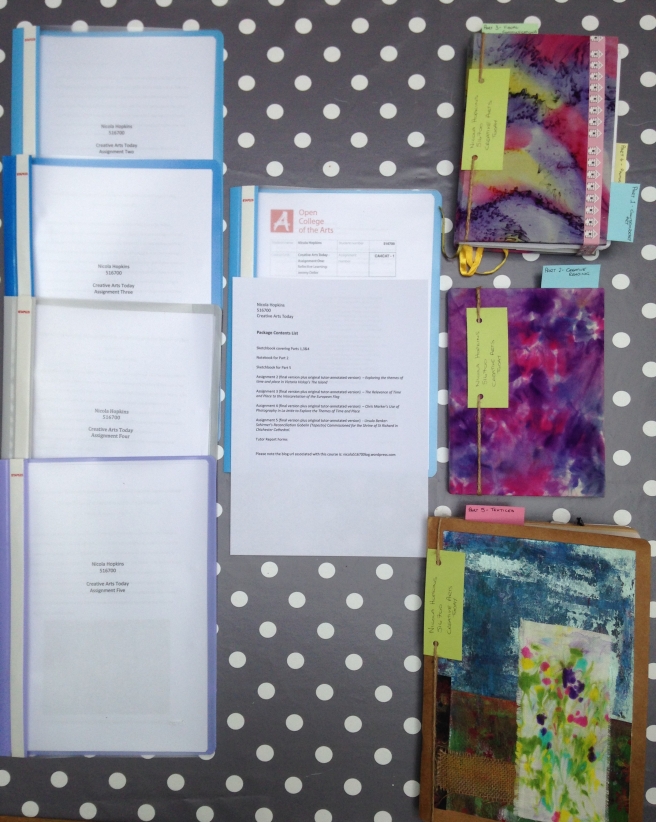Following submission of my draft of the essay on Banksy’s reappropriation of the EU flag, my tutor suggested looking at Morden, T. (1986) Documentary: Past. Future? In Holland, P. Spence, J. & Watnev, S. (eds.) Photography/Politics: Two London: Comedia
Morden’s Documentary: Past. Future?
Ideas from this book are possibly applicable to the Jeremy Deller and Chris Marker essays.
Morden traces the term documentary to John Grierson’s 1926 review of Robert Flaherty’s film Moana about South Sea islanders. Grierson linked documentary with the problems of the modern world seeing its task as guiding citizens through ‘modern life towards an active role in the democratic process.’ Film is able to ‘bring alive’ the subject in a way that a written article or photographic stills cannot? Perhaps because it mimics the way that we experience the world?
Documentary film is rooted in the belief in the transparency of the photographic image (recording and re-presenting reality) and has a political role. Morden suggests that it is ‘a means of communication not based on language or an interpretative schema’ but later contradicts this by discussing the importance of the concept of perspective…
Documentary is seen to be representative of reality by presenting the subject ‘in an unbiased way’ often filming on location and using native actors.
Documentary film was conceived of as a mediator between the State/commerce and the public. While it is often served as a means of propaganda for these institutions, it saw propaganda as a benign force, concerned with the communication of useful knowledge to the citizen.
Can propaganda be benign? Arguably those of opposing views will object? The Workers Film and Photo League was a documentary film movement concerned with political agitation and social change.
Documentary photography was strongly influenced by German photojournalism which was ‘imported’ by refugees from Nazism. This was the origin of ‘scoop’ photographs to ensure magazines had the best, most striking or novel photographs. Documentary photography (German origins) operated for highly competitive magazines whereas documentary film (British origins) was usually sponsored by state institutions. German magazines ‘saw photography as a new means of seeing’ but British documentary saw ‘photographic image as confirming or duplicating what the eye sees.’
At the end of the 1930s Picture Post was launched in Britain. It was published in black and white and attempted to eradicate ‘all signs of interference’. It intended to remove any signs that a number of processes/decisions had been made in its publication. Conventions such as neutral grey, geometric layout etc implied connotations of realism, objectivity and impartiality. Encouraged viewers to read the images as objective – social realist documentary.
Later colour magazines would combine pictures and text to work together so that the viewer was encouraged to look across the page itself rather than see it as a window to the world at large. The subjects became ‘agents of spectacle’. By the 1960s photojournalists were expected to have a ‘visual style’ and possess attributes such as ‘heroism, perseverance, sensitivity, and…visual creativity’. This seems in direct contradiction, if the photographer’s style is evident then how can a photograph represent an objective reality?
According to Morden, photographic representations involve at least two reductions:
- reduce three dimensions to two
- reduce a world in constant flux to a series of frozen moments
therefore distort temporal and spatial relationships.
Contemporary theory has roots in semiotics- photography is a mode of representation. Mode is based on concept of perspective to create the illusion of three dimensions. ‘Perspective is not a condition of space but a condition of the perception of space… Perspective, then literally orders space for/around the viewer.’ ‘Photographic representations are only natural and neutral because perspective itself has a status which puts it beyond question.’ Real is taken as a given, the image stands in for reality and the viewer can distinguish between the image and reality. This formulation ignores that there is a complex relationship between language and consciousness – perception? This theory assumes that there is an ultimate ‘truth’ which is not in any way subjective?
Morden asserts that in a democratic society ‘political action must be directed towards reform’ as radical change in unnecessary. Any social injustice must be ‘considered as a local or isolated aberration’. In this theory, documentary exposes local problems. ‘Documentary informs all citizens so that they may act democratically and collectively to rid society of such ills’ – Would all citizens necessarily agree with what constitutes an ill. Morden makes the point that a ‘democracy which feigns equality only stands in the way of such change.’
Documentary which promotes the idea that citizens are free to choose assumes that citizens are free to act and are free from exploitation. ‘Facts’ are relative and knowledge usually represents vested interests. This implies that ‘documentary is not an agent for freedom and equality, but rather a force against them’.
